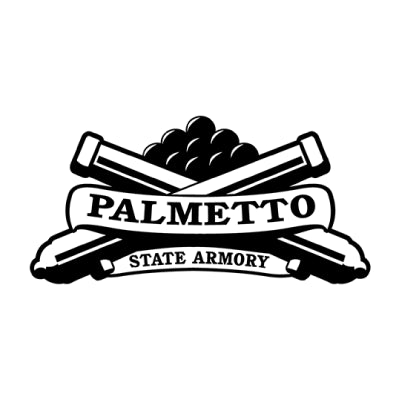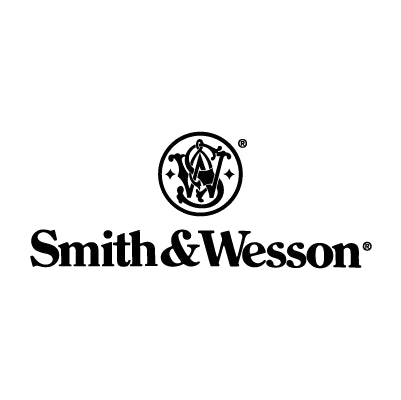
Owning a firearm that is stored unloaded, kept in a safe, or used only for training gives many gun owners a level of comfort. You might think, “My gun is safe; it’s unloaded,” or “I’m just doing dry fire, no live rounds, so how risky can it be?”
The truth is that safe habits still matter just as much in dry fire as they do in live-fire sessions. In fact, some argue they matter even more.
Because the absence of recoil and noise can lull a shooter into complacency, the importance of consistent safe direction, chamber checks, clear unloading, and dedicated training spaces becomes even more critical.
Even when a firearm is “safe” in the sense of being unloaded or inert, accidents happen. The oversight isn’t always due to a malfunctioning gun. It's often due to neglected habits or procedural shortcuts.
When you commit to dry fire training, you are working with the same tool that, in another context, could go live. You owe it to yourself and others to treat dry fire with the same respect and discipline.
The Fundamentals of Safe Gun Handling Apply in Dry Fire
Whether you’re on the range with live ammo or at home with an empty chamber, the core safety rules remain unchanged. According to the National Shooting Sports Foundation (NSSF), even when dry firing, you “should never point the gun at an unsafe target.”
Here are some of the unchanging rules that apply:
-
Muzzle control: Always know where the muzzle is pointed. Even in dry fire, the gun should be pointed in a direction you consider safe.
-
Verify unloaded status: Just because you think the gun is unloaded doesn’t mean it is. Chambers, magazines, and backup ammo need to be confirmed.
-
Finger off the trigger until ready: Use the trigger only when you're ready to fire and do not place your finger on the trigger until your gun is pointed at the target zone.
-
Treat every gun as if it could fire: Well-trained shooters often say the only truly safe gun is one you’ve rendered inert or completely separated from ammo.
Why So Many Casual Dry Fire Sessions Become Unsafe
There are a few common patterns that lead to negligent incidents during dry fire practices, even when the gun is supposedly safe. According to training-safety reports, complacency is a major factor.
Here are the house-keeping issues that often show up:
-
Interruption or distraction: Someone pops in during the drill, the phone rings, you pause the session and forget to re-clear. At that moment, the gun might get loaded or you might change a magazine and forget.
-
Live ammunition nearby: You’re in your garage, and there’s live ammo in the same room or within reach. The boundary between training gun and live gun gets blurred.
-
Using the same magazines for dry fire and live fire: When there’s no clear distinction, it’s easy to load a live round in a magazine used for drills—or misidentify a magazine entirely.
-
Assuming “it’s safe just this once”: The mental shortcut says, “I just need five minutes, I’ll be quick.” That’s when safety posture loosens and accidents can occur.
How to Establish Safe Habits for Dry Fire
To avoid risk while training at home, every shooter should create a formalized dry fire routine that includes a pre-session checklist, a dedicated space, and a post-session habit.
Pre-session:
-
Remove all live ammunition from the room. No magazines, no loose rounds.
-
Choose/declare a safe direction. Make sure your backstop is secure and you are comfortable pointing your muzzle that way.
-
Clear the firearm: remove the magazine, open the action, inspect the chamber and magazine well, visually and physically. Consider using a DryFireMag.
-
If using training gear (such as a dry-fire magazine or laser cartridge), install it only after the gun is confirmed empty.
-
Announce verbally that your session is beginning. This mindset helps draw a line between casual handling and focused training.
During session:
-
Keep your eyes on fundamentals—grip, stance, sight alignment, trigger press—not just clicking the trigger.
-
Remain aware of where your muzzle is pointed at all times.
-
Avoid multitasking, distractions, or external interruptions. If interrupted, stop, re-clear, and start fresh.
-
If you pick up live gear or a live magazine by accident, stop the session and begin again from scratch.
Post-session:
-
Unload and put away all training gear.
-
Secure your firearm and dry fire tools.
-
Document the session briefly—note what you worked on and any safety lessons.
Why Tools Can Support Safety, but Don’t Replace the Habits
Training tools can be a huge help in dry fire. They allow more reps, better feedback, and safer training. For example, a dedicated training magazine like the DryFireMag not only resets the trigger for you but also helps ensure you’re using a purpose-built tool, not a magazine that could hold live rounds.
However, tools don’t replace habits. No matter how many features a training aid offers, if you skip the safety check, keep live ammo nearby, or allow distractions, the risk remains. The tool is a support—your discipline is the real safety system.
Real-World Considerations: “Safe” Does Not Mean “Risk-Free”
The concept of a “safe” gun is subjective. Here are three important reminders:
-
Unloaded doesn’t mean inert: Even when no round is in the chamber, a mistaken magazine insertion or improper safety protocol can turn a drill dangerous.
-
Dry fire and live fire are different training modes: But the tools remain the same. The moment you pick up the gun, the four rules of gun safety apply, regardless of your intent.
-
Training context adds risk: When you’re using targets, moving, drawing, or handling your gun around others, the environment becomes more dynamic. Maintain the same level of caution as you would at a live range.
Integrating Safe Habits Into Regular Training
To make safe habits stick, incorporate them into your regular weekly dry fire sessions.
-
Make your dry fire sessions scheduled: For example, every Wednesday evening for 15 minutes. A consistent routine helps you build discipline.
-
Log both skill and safety observations: Note what you practiced and what you checked. Keeping a training log reinforces both progress and safety.
-
Use a verbal “safety anchor”: Create your own anchor. It can be something like: “Dry fire training begins. Gun is cleared. Ammo is removed. Safe direction confirmed.”
-
Review ammunition separation: Ensure your training area is completely separate from any source of live ammo.
-
Occasionally, ask for a buddy check: If someone else is around, involve them in a quick review. Even just asking, “Does this look clear?” builds shared awareness.
Safe Guns Need Safe Habits
A firearm being “safe” in the sense of unloaded or stored is not enough. The most meaningful form of safety is habit-based safety—a commitment to rigorous standards and procedures that don’t bend under convenience, repetition, or false confidence.
Dry fire is an incredible tool for developing shooting skill. When paired with tools like the DryFireMag, it becomes even more efficient and realistic. But no tool or gadget will replace your personal discipline.
The next time you get ready to practice dry fire, slow down. Clear your gun twice. Scan your space. Commit to safety from beginning to end. Because every time you pick up your firearm—whether you plan to shoot or not—you’re setting the tone for how you’ll handle it when it matters most.









